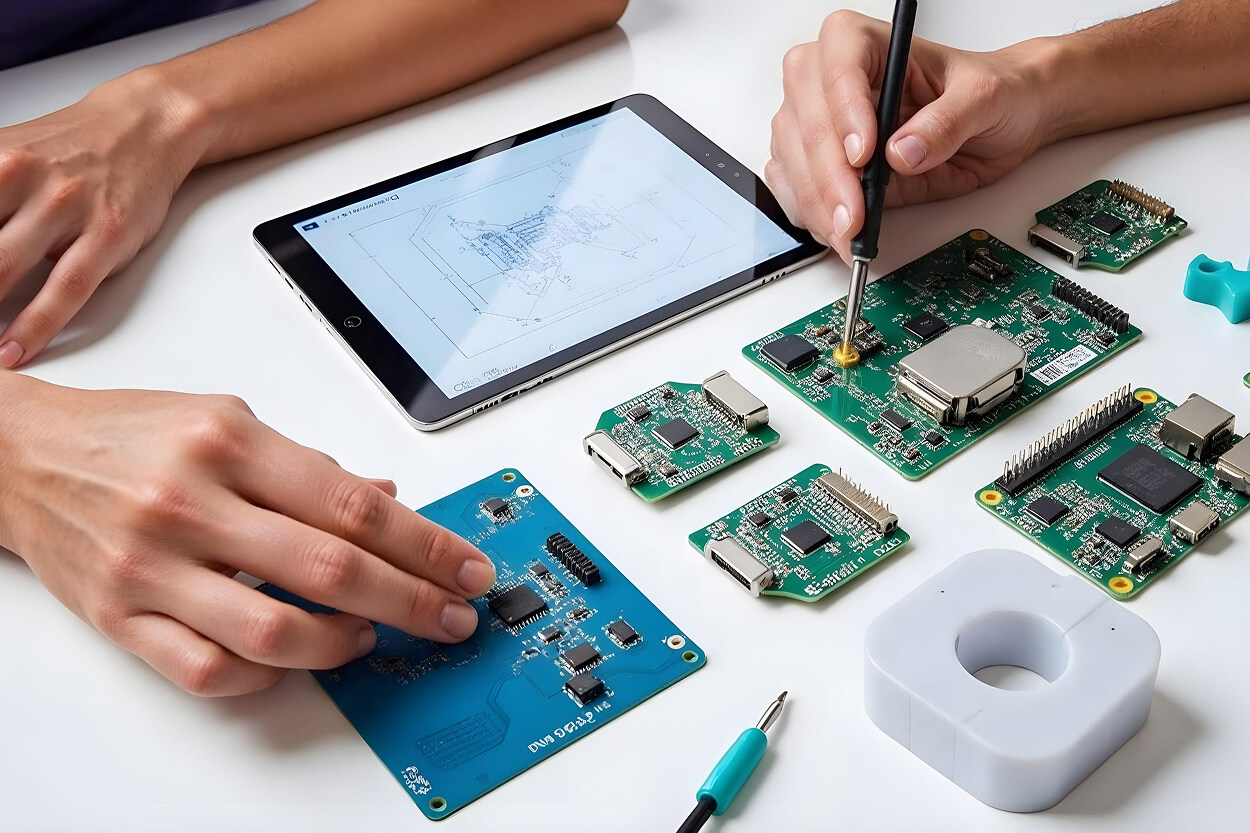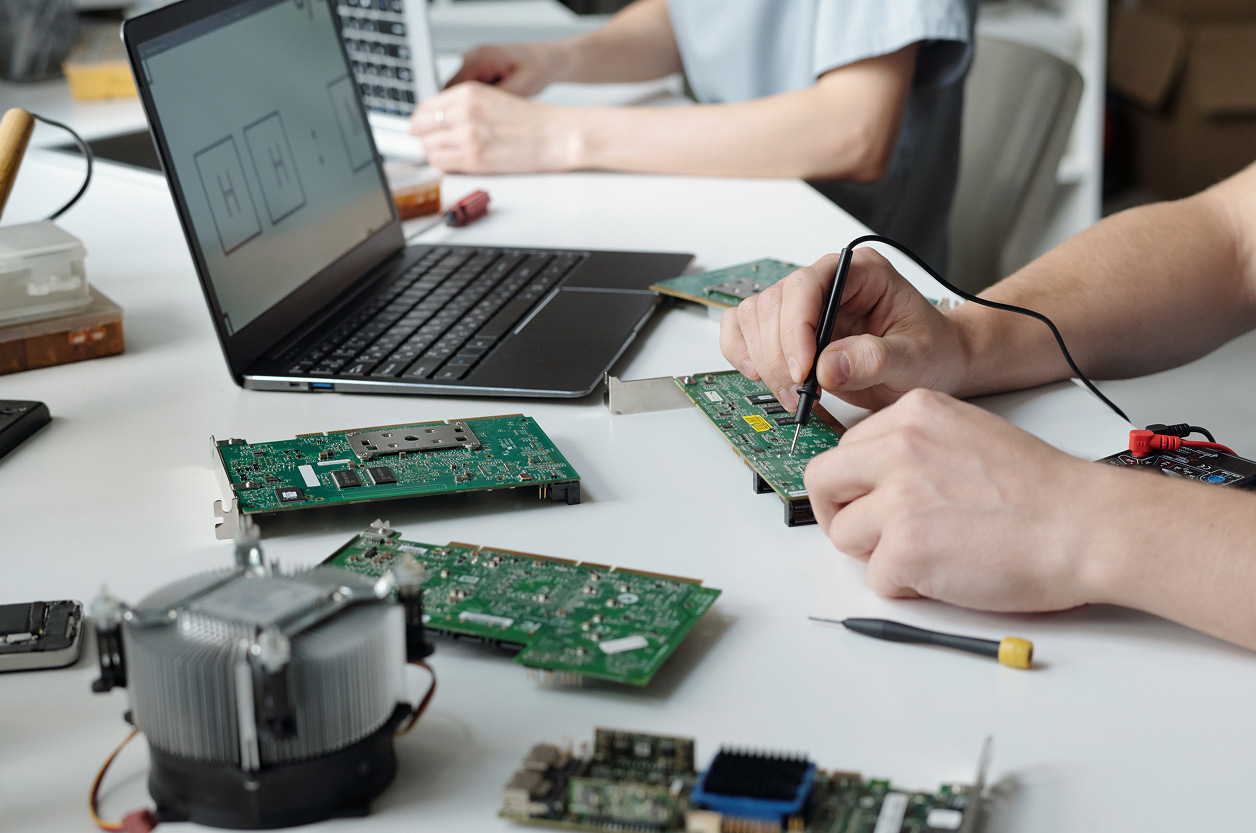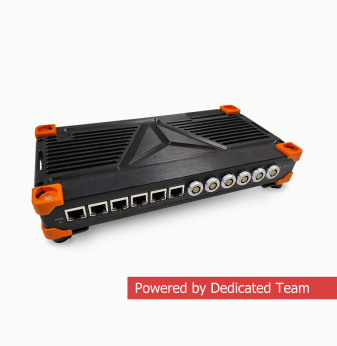Rapid Prototyping Methods for Electronics: Tools, Techniques, and When to Use Each

Why Rapid Prototyping Is a Game-Changer in Electronics Development
Speed matters. Whether you're building a new IoT device, refining an industrial control unit, or testing a wearable, the ability to prototype fast and iterate often can save months of development time and thousands in engineering costs.
In this article, we walk through the most popular rapid prototyping methods for electronics — covering mechanical, electrical, and interface components — and offer guidance on when to use each.
What Does Rapid Prototyping Mean in Electronics?
Unlike pure mechanical engineering, electronics prototyping requires the integration of:
- Mechanical enclosure mockups
- PCB assemblies (real or simulated)
- User interface elements (buttons, screens)
- Thermal and EMI behavior validation
The goal isn’t just to create a model — it’s to test form, fit, function, and manufacturability in record time.
Mechanical Prototyping Methods
1. 3D Printing (FDM, SLA, SLS)
| Feature | Description |
| Best for | Early-stage design verification |
| Pros | Fast, cheap, accessible, great for fit testing |
| Cons | Limited surface finish and strength |
| Typical turnaround | 1–2 days |
| Materials | PLA, ABS, PETG, Nylon, resins for higher resolution |
2. CNC Machining
| Feature | Description |
| Best for | Rugged prototypes or low-volume production |
| Pros | High precision, functional strength |
| Cons | Slower and more costly than 3D printing |
| Typical turnaround | 3–7 days |
| Materials | Aluminum, Delrin (POM), PC, PP, Nylon |
3. Vacuum Casting
| Feature | Description |
| Best for | Realistic appearance and short-run batch testing |
| Pros | Good cosmetic quality, soft-touch materials |
| Cons | Molds degrade after 20–30 shots |
| Typical turnaround | 7–10 days |
| Materials | Polyurethane, silicone rubbers, ABS-like resins |
Electrical Prototyping Techniques
1. Quick-Turn PCB Manufacturing
Best for: Functional boards, design validation
Pros: Available in 24–72 hours, low-volume ready
Cons: Costlier per unit than mass production
Services: JLCPCB, PCBWay, Eurocircuits, Tempo Automation
2. PCB Assembly (PCBA) Prototyping
Use pick-and-place machines or manual assembly
Combine stencils, reflow ovens, and jig-based testing
Great for bringing embedded systems to life quickly
Turnaround with express services: 3–7 working days
3. Development Boards + Custom Adaptors
Raspberry Pi, STM32 Nucleo, ESP32 dev boards, Arduino
Solder custom adapters to mimic hardware behavior
Useful for early firmware development and UI prototyping
HMI and Interface Prototyping
Tools for UI Simulation: Figma and Adobe XD for touchscreen flow simulation; Qt Designer, LVGL Simulator for embedded GUI prototyping
Physical Interface Mocks: Laser-cut panels for button and screen testing; capacitive touch overlay emulation with conductive films
These allow UX testing without waiting for final hardware.
Comparing Rapid Prototyping Methods
| Method | Best Use Case | Speed | Cost | Scale |
| 3D Printing | Early enclosure fit | ★★★★☆ | $ | Prototype |
| CNC Machining | Strong enclosure or test jig | ★★★☆☆ | $$–$$$ | Low volume |
| Quick-turn PCBs | Functional electronics | ★★★★★ | $$ | Prototype |
| PCBA Services | Complete hardware | ★★★★☆ | $$$ | 5–100 pcs |
| Vacuum Casting | Pre-production demo units | ★★★☆☆ | $$$ | 20–100 pcs |
When to Combine Methods
A typical rapid prototype for a new connected device might include:
- CNC-milled aluminum enclosure (rigid + thermal)
- 3D-printed internal brackets or shields
- Quick-turn 4-layer PCB + hand-soldered components
- Touchscreen interface mocked in Qt Simulator
Using multiple methods in parallel reduces risk and gives both firmware and mechanical teams something to test against.

Common Pitfalls to Avoid
- Skipping DFM checks early – Always simulate assembly and fit
- Ignoring tolerance stack-ups – Especially between enclosure and board
- Overcommitting to 3D-printed surfaces – Remember: what looks good printed may not mold well
- Using different prototyping vendors for every piece – Misalignment and miscommunication happen
Working with an integrated team or development partner ensures better results.
Final Thoughts: Speed with Strategy
Rapid prototyping isn’t just about hacking things together. It’s about building smart, testable, manufacturable iterations that move your product forward — from proof of concept to pre-production.
At Promwad, we combine mechanical design, PCB development, embedded software, and industrial design to prototype fast — and build products that scale.
Let’s accelerate your next prototype — with the right mix of tools and techniques.
Our Case Studies





